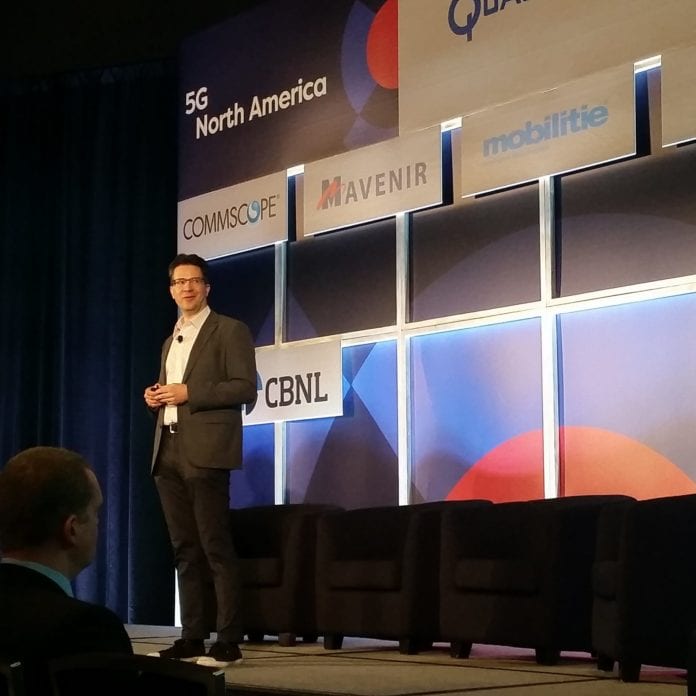AUSTIN, Tex.—LTE is likely to be a crucial support to “5G” systems for many years to come, according to industry experts at 5G North America.
Chris Pearson, president of 5G Americas, told attendees that about the time that LTE is expected to hit 4.7 billion subscriptions in 2021, 5G will just be in early stages. In addition, the migration paths to the 5G New Radio that are being laid out in standards bodies offer a number of options for operators to combine LTE network elements with 5G cores until they are eventually able to implement standalone 5G.
“We can’t overlook the importance of what we’re doing now in our networks to really build that foundation as we plan for that future of 5G,” Pearson said. He also noted that operators are likely to continue investing in LTE systems even when they start to deploy 5G, because “they don’t want the difference between the New Radio and LTE to be that much different.”
In a keynote address, Karri Kuoppamaki, T-Mobile’s VP of technology development and strategy, discussed the operator’s plans to utilize its newly won 600 MHz spectrum for 5G deployments that will utilize the low-band spectrum. Although industry conversation often revolves around the use of millimeter wave for 5G, Kuoppamaki said, “every single frequency band will become a 5G band.There’s no reason why that wouldn’t and shouldn’t happen.”
While AT&T and Verizon have focused on millimeter-wave testing for 5G implementations, Sprint has talked about leveraging its 2.5 GHz spectrum as “low-band 5G” and bringing 5GNR to that spectrum, while T-Mobile US has talked up the use of 600 MHz. As Kuoppamaki put it, coverage counts in a 5G context even though the industry often tends to focus on aspects such as expected high speeds and low latency.
“Coverage does matter, especially with the limited range that millimeter wave spectrum will provide to us,” he said. “It’s going to be really, really hard to build out significant wide-area coverage.”
He added that T-Mobile US’ strategy will be to utilize the 600 MHz spectrum for a nationwide footprint and boost capacity with millimeter wave in urban areas by utilizing the 200 megahertz of 28 GHz and 39 GHz millimeter wave spectrum that it acquired when it bought MetroPCS, which Kuoppamaki noted covers about 100 million potential customers across the country.
“That’s a very good starting point for us,” he said. Kuoppamaki also went on to add that “unlicensed spectrum, just like it plays a role in LTE today, it will play a role in 5G.” The 60 GHz band, where the new Wi-Fi standard 802.11ad operates and is in the early stages of device availability, represents one option for leveraging unlicensed spectrum in millimeter-wave 5G systems.

